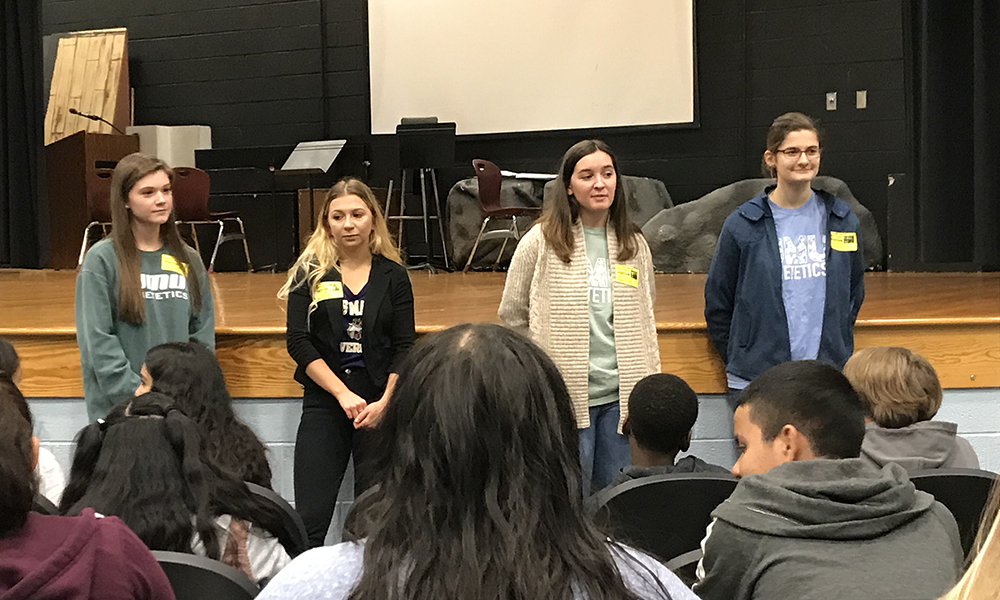Dietetics students teach nutrition at Skyline Middle School
NewsBy: Brittany Bell
Creative Services Student Writer

Most JMU programs offer opportunities for service-learning in the local community. Recently, dietetics professor Jennifer Walsh took four of her students—two juniors and two seniors—to Skyline Middle School to teach nutrition during physical education classes. “It worked really well for us to interact with the community,” Walsh said. “My area of expertise is community nutrition and eating behavior, so I’m always looking for opportunities to engage.”
Skyline P.E. teacher Becky Johnson approached Walsh about helping with the nutrition health module in her classes. Walsh and senior dietetics major Kimberly Ellis then spent two weeks preparing activities suitable for middle school students.
When the day came, each class began with everyone together, then students were divided into groups to rotate through three learning stations before briefly coming back together at the end. The lessons during these rotations taught them about nutrient density, acidic foods and added sugars. The volunteers worked with all three grade levels—sixth through eighth — throughout the day.
The nutrient density station focused primarily on nutrients as they correlate to the amount of calories provided. The students compared different types of food; they measured out how many grams equaled 100 calories of spinach and of chocolate and observed the difference. The second station focused on the effect of acid on teeth and bones, specifically with acidic drinks like soda. Ellis had prepared boiled eggs with shells and placed them in containers of vinegars overnight to simulate the effect of acid on teeth. The last station assessed different types of beverages and sorted them based on their amounts of added sugars.
“The activities were hands-on, so they understood what we were talking about better than if we had just stood there speaking,” Kellie Haskins, a junior dietetics major, said. “I think that made it fun for them and helped them learn.”
Beyond just teaching the middle school students about nutrition, the volunteers also explained the basics of the dietetics profession. Engaging the children in activities and having them interact with the material piqued their interest in nutrition and dietetics. A challenge faced was teaching the lessons in an effective way for the range of student ages participating and their previous knowledge levels.
“Since I am a senior in the dietetics program I have a pretty good basis of knowledge, and I kind of get carried away with what is too in-depth for middle school kids,” Ellis said. “It was hard to keep it to a level that they would understand and be interested in but still learn something from.”
The general consensus was that the volunteering experience was a success. By engaging with the children for these lessons the dietetics students were able to practice their profession in the community.
“Our students were able to teach the application of basic nutrition concepts and field the random questions that come up when people start thinking about food and nutrition in general,” Walsh said.
“When you’re in the classroom you’re just learning how it happens, but when you’re actually in the community, that’s when you can fully understand how things affect people,” Ellis continued.

